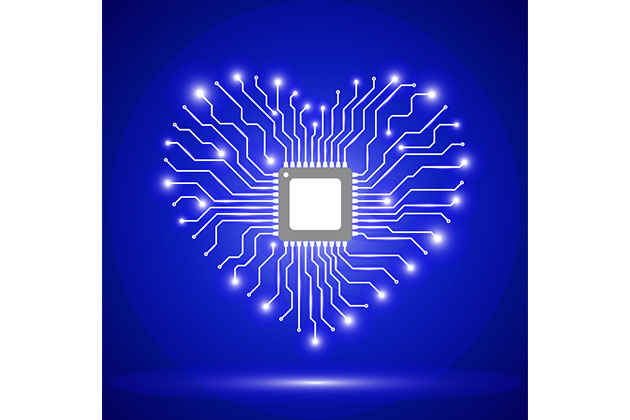Scientists have designed a new chest-laminated, ultrathin, 100 percent stretchable cardiac sensing electronic device (e-tattoo) to monitor heart functions. The device can measure ECG, SCG (seismocardiogram) and cardiac time intervals accurately and continuously for longer duration to monitor blood pressure.
Cardiovascular disease(s) is the leading cause of deaths worldwide. Monitoring function of our heart can to an extent help in preventing heart diseases. The ECG (electrocardiogram) test measures electrical activity of our heart by measuring heart rate and rhythm to tell us whether our heart is functioning normally. Another test called SCG (seismocardiography) is an accelerometer sensor-based method which is being used to record cardiac mechanical vibrations by measuring chest vibrations caused by the heartbeats. SCG is gaining importance in the clinic as an additional measure along with ECG to monitor and ascertain cardiac abnormalities with improved accuracy and reliability.
Wearable devices like fitness and health trackers are now a promising and popular alternative to monitor our health. For monitoring heart functions, few soft devices are available which measure ECG. However, SCG sensors available today are based upon rigid accelerometers or non-stretchable membranes making them bulky, impractical and uncomfortable to wear.
In a new study published on May 21 in Advanced Science, researchers describe a new device which can be laminated on one’s chest (hence called as an e-tattoo) and monitor heart functions by measuring ECG, SCG and cardiac time intervals. This unique device is ultrathin, lightweight, stretchable and it can be placed over one’s heart without need of a tape for long durations without causing pain or discomfort. The device is made of a serpentine mesh of commercially available sheets of piezoelectric polymer called polyvinylidene fluoride by using a simple, cost-effective fabrication method. This polymer has a unique property of generating electric charge in response to a mechanical stress.
To guide this device, a 3D image correlation method maps motion of the chest derived from respiration and cardiac movement. This helps to find the optimal sensing spot for chest vibrations to mount the device. The soft SCG sensor is integrated with stretchable gold electrodes onto a single device itself creating a dual mode device which can synchronously measure ECG and SCG by using electro- and acoustic cardiovascular sensing (EMAC). ECG is routinely used to monitor one’s heart, but when combined with SCG signal recordings, its accuracy gets enhanced.. Using this EMAC sensor and performing synchronous measurements, different cardiac time intervals can be successfully extracted including systolic time interval. And, it was seen that systolic time interval has a robust negative correlation with blood pressures, thus beat-to-beat blood pressure could be estimated using this device. Strong correlations were seen between systolic time interval and the systolic/diastolic blood pressures. A smartphone remotely powers this device.
The innovative chest-mounted device described in the current study provides a simple mechanism to monitor blood pressure continuously and non-invasively. This device is an ultrathin, ultralight, soft, 100 percent stretchable mechano-acoustic sensor which has high sensitivity and can be easily manufactured. Such wearables which can be worn to monitor heart functions without needing to visit the doctor could be promising for preventing heart diseases.
***
{You may read the original research paper by clicking the DOI link given below in the list of cited source(s)}
Source(s)
Ha T. et al. 2019. A Chest‐Laminated Ultrathin and Stretchable E‐Tattoo for the Measurement of Electrocardiogram, Seismocardiogram, and Cardiac Time Intervals. Advanced Science. https://doi.org/10.1002/advs.201900290






































